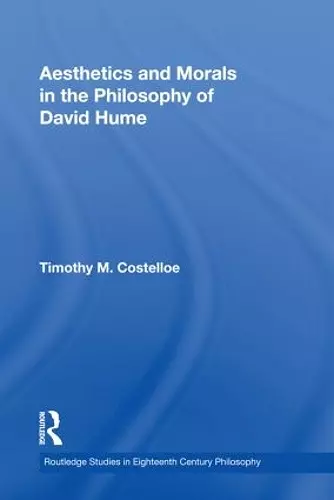Aesthetics and Morals in the Philosophy of David Hume
Exploring the Intersection of Aesthetics and Ethics
Format:Paperback
Publisher:Taylor & Francis Ltd
Published:16th Jun '09
Currently unavailable, and unfortunately no date known when it will be back
This paperback is available in another edition too:
- Hardback£180.00(9780415955881)

This insightful exploration of Hume's philosophy reveals the intricate connections between aesthetics and ethics, as presented in Aesthetics and Morals in the Philosophy of David Hume.
This book offers a comprehensive examination of Hume's philosophy, focusing on two primary aims. The first aim is to explore the connection between Hume's aesthetics and his moral philosophy, delving into how these two aspects intertwine. By analyzing Hume's essay 'Of the Standard of Taste', the author seeks to understand the nature of Hume's aesthetic standards and their implications for moral thought. The text further establishes that Hume perceives beauty in nature, art, and moral beauty as fundamentally similar, providing a foundation for understanding his moral philosophy.
The second aim of the book addresses significant questions in ethics through the lens of Hume's moral philosophy. The author critiques three major objections to Hume's ethical framework, exploring the implications of moral sentiments and the concept of universal moral standards. By engaging with these objections, the book highlights Hume's nuanced approach to morality, emphasizing the importance of educated sentiments and the potential for moral progress, despite the diversity of moral systems.
Chapters 1-4 focus on the first aim, while chapters 5-7 tackle the second aim, culminating in a discussion on how Hume's philosophical perspective influences normative ethics. Ultimately, Aesthetics and Morals in the Philosophy of David Hume provides a thought-provoking analysis of Hume's contributions to aesthetics and ethics, shedding light on the relevance of his ideas in contemporary philosophical discourse.
"Timothy Costelloe sets two tasks for himself in his thought-provoking Aesthetics and Morals in the Philosophy of David Hume: to make a contribution to our understanding of Hume’s aesthetics, and then to use that contribution to throw light on Hume’s theory of morals. Costelloe is a graceful writer with an impressive grasp of the whole of Hume’s corpus. He is consistently engaging, his interpretations are consistently suggestive, and the comparisons that his powerful grasp of Hume’s writings allow him to make are consistently striking." -- James Shelley, Department of Philosophy, Auburn University
ISBN: 9780415802987
Dimensions: unknown
Weight: 300g
142 pages